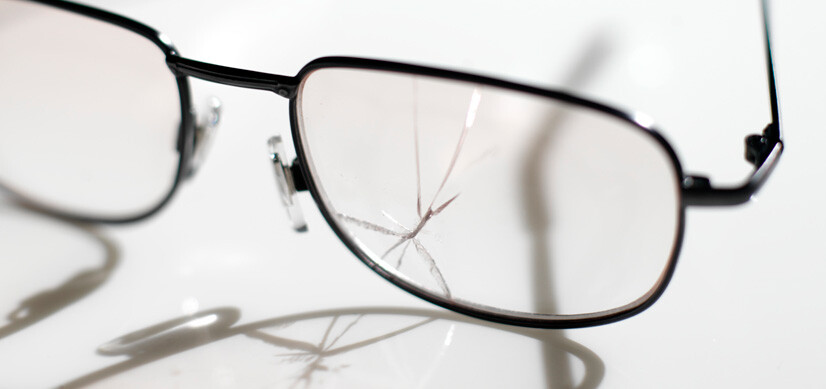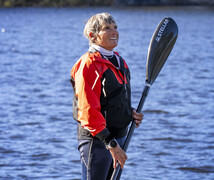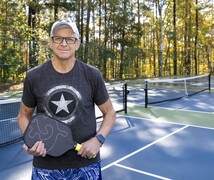In 2008, Anne Rice lost the sight in her right eye because of a fungal infection that occurred as a complication of cataract surgery. Because Rice has 20-20 vision in her left eye, her retinal specialist predicted that in just a little while, she wouldn’t notice the difference.
But she did notice, especially when she backed into another car in a grocery store parking lot. “I had looked over my right shoulder when I backed up, but I failed to remember that I didn’t have the full range of vision that I had before,” she said. “You are continually reminded of your loss in vision efficiency.”
That’s when Rice accepted a referral from Diane Whitaker, OD, chief of the Duke Eye Center’s vision rehabilitation service, to see a driving evaluator.
The referral was part of a formal protocol Dr. Whitaker has developed to help retrain adults who have lost vision in just one eye (monocular vision loss), whether that loss is caused by trauma, infection, or tumor.
Monocular Vision Adjustment Takes Time
It takes more work than most might think to adjust to this type of sudden loss. “Some people assume that if you have one eye with good vision, you will function the same way you would if you have two eyes. In fact, many eye doctors have underestimated the time required to adjust to losing one eye,” Dr. Whitaker said.
But studies have shown that adults who lose the sight in one eye have declines in their abilities to accurately track moving objects, to judge distances, and to perceive depth. That means they will have to learn how to consciously use one eye and their other senses to gather the information their two eyes once collected effortlessly.
“The automatic pilot no longer works automatically,” Rice said. “It was so refreshing to discover Dr. Whitaker and the help she can give, because she truly understands, as much as a person with two eyes can.”
Visual Training Activities Help
Dr. Whitaker’s intervention prescribes training in three specific activities. The first—reaching for and grasping objects—is covered by one or more hour-long sessions with an occupational therapist.
“Both the speed and accuracy of the grasp is negatively affected by loss of binocular vision,” Dr. Whitaker said. "For example, they will grab for something and not get it on the first try, or they will be pouring coffee or tea and miss the cup."
Rice learned to remedy this by wrapping one hand around the cup while she pours with the other hand. Adding the nonvisual signal (from the sense of touch) helps the brain judge the distance and location more accurately, Dr. Whitaker said.
Adults who lose vision in one eye also have more collisions when walking, especially on the side where they lost the vision. That’s where sessions with an orientation and mobility specialist can help.
“The emphasis is on helping people to judge distances by using monocular clues, such as something called motion parallax. If you’ve ever seen a cat moving its head or eyes side to side before it jumps, that’s motion parallax,” Dr. Whitaker said.
“You can train a person to do this by using more side-to-side head movements.” Rice said that, to avoid bumping into people in crowded stores, for example, she’s learning to stop and check her right side before she moves.
The final part of the intervention is learning new techniques for driving safely with vision in only one eye. “The loss of depth perception means that people have a hard time judging their vehicle’s distance from another car, or whether their car can fit into a parking space,” Dr. Whitaker said.
“We can train people to turn their head more toward the non-seeing eye, and some driving instructors may recommend special interior or exterior mirrors that can help improve field of vision as well.”
Retraining Speeds Recovery, Improves Confidence
Rice said the driving evaluator helped her tremendously. They went out in her own car, and he assessed her strengths and weaknesses while driving and parking at places she frequents, such as her church and her bank. Now she turns her head more and makes a conscious effort to scan her full visual field.
“You’re scanning all the time when you have two eyes that work, and you also can do that with one eye, but you don’t realize how much your two eyes were working together, especially in judging distance,” Rice said.
“When you don’t have that second eye working for you, you have to take some overt steps to remedy that deficiency. The training improved my ability to drive, and it also gave me a new level of confidence.”
“Traditionally, we assume a six- to nine-month adjustment period is normal to help someone adjust to having vision in only one eye,” Dr. Whitaker said. “The intervention expedites this recovery and can help patients avoid losing work time. It also lessens their anxiety about the functional challenges they are experiencing.”
Dr. Whitaker is now studying the results of the intervention to quantify how much it helps and determine the reduction in adjustment time.
Rice and Dr. Whitaker hope to start a support group for adults who have lost vision in one eye. “It can be easy to get discouraged,” Rice said. “Dealing with this requires learning some new skills, and those are things you can share with other people.”






